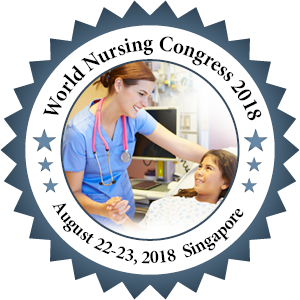Jennifer Tavares-Kitchen
Advocate Children’s Hospital, USA
Title: Improving Health Care Outcomes: Bringing the Nurse Back to the Bedside
Biography
Biography: Jennifer Tavares-Kitchen
Abstract
Background: Bedside nursing care, which provides critical assessments, evaluations and interventions, is an essential component of patient safety measures. Hospitals, however, have overburdened the nurses with an enormous amount of additional administrative and operational tasks designed to ensure compliance with external and internal regulatory requirements imposed by health care agencies, insurers and the hospital itself. This has left the nurses little time to spend with patients, which may have led to decreased satisfaction and increased risk.
Objective: Review, analyze and reduce the number of the nurses’ administrative and operational tasks, demonstrating that this can be achieved without compromising regulatory compliance and increasing the time nurses spend with patients at the bedside.
Methods: Tasks that had nothing to do with direct patient care were tabulated and presented to a review committee of frontline nurses. The Committee recommended the elimination and/or modification of about one third of those tasks. It also recommended the designation of a circulating nurse who can provide support to whomever is overburdened. A pilot project utilizing this modified workflow model was implemented on one of the medical-surgical units. A time and motion study was conducted to evaluate whether this model can result in increased bedside nursing care. The results were compared to the results of an earlier study we conducted which had monitored the standard workflow model.
Results: The modified workflow model consisted of five components: decreased EMR charting time (charting by exception), eliminating phone calls from the pharmacy and laboratory, optimizing nurses’ time finding supplies by implementing a two-bin system, bedside shift report and access to the medication room. Bedside care increased from an average of 64 minutes per patient, per shift, to 85 minutes (32%). The staff reported increased associate, physician and patient satisfaction and a better handle on obtaining relevant, meaningful and timely patient assessments and evaluations. The modified workflow model did not result in compromising regulatory compliance.
Conclusion: It is possible to decrease or modify many of the administrative and operational tasks imposed on the nursing staff and increase the amount of time spent at the bedside without violating 2
the mandated regulatory policies. Bedside nursing care improved the hospitals’ health care outcomes.
Recommendations:
• Implement the modified workflow model on all the medical-surgical units
• Modify or eliminate more tasks not related to direct patient care
• Develop and implement a structured process allowing the nurses to provide ongoing bedside patient assessments and evaluation, specifically at the time of admission and following a procedure
• Be more receptive to the suggestions of the front-line staff on how to further improve care delivery

